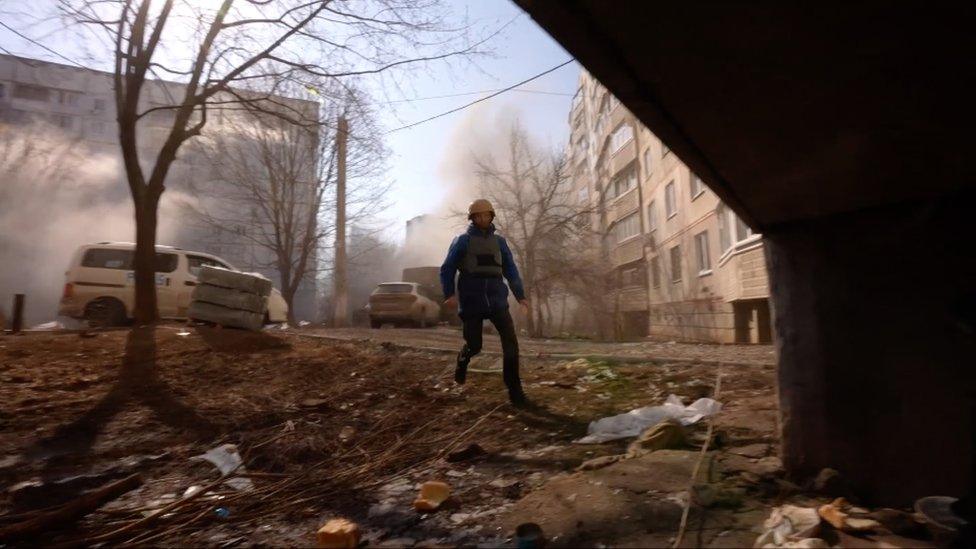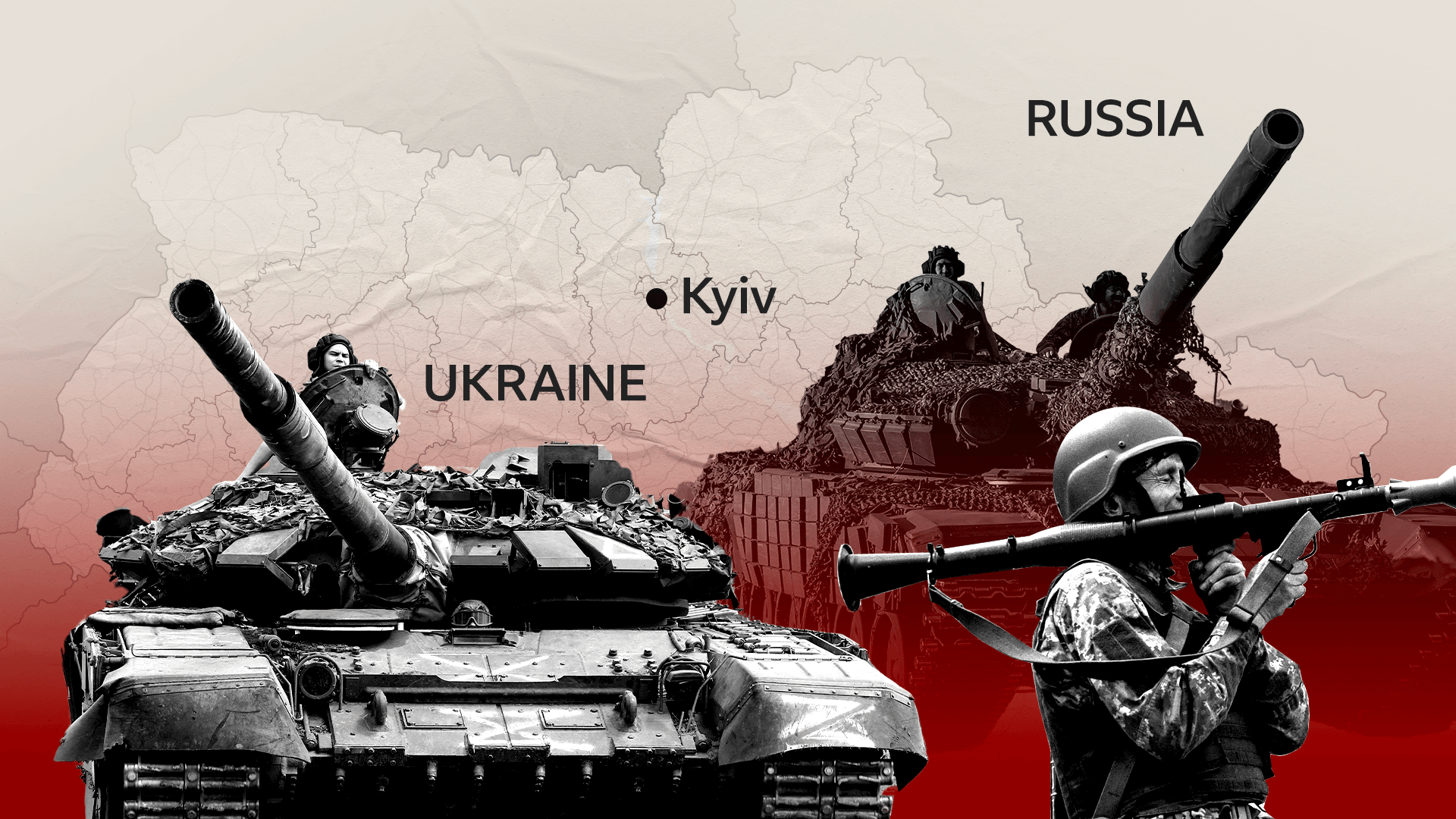Ukraine: What have been Russia's military mistakes?
- Published
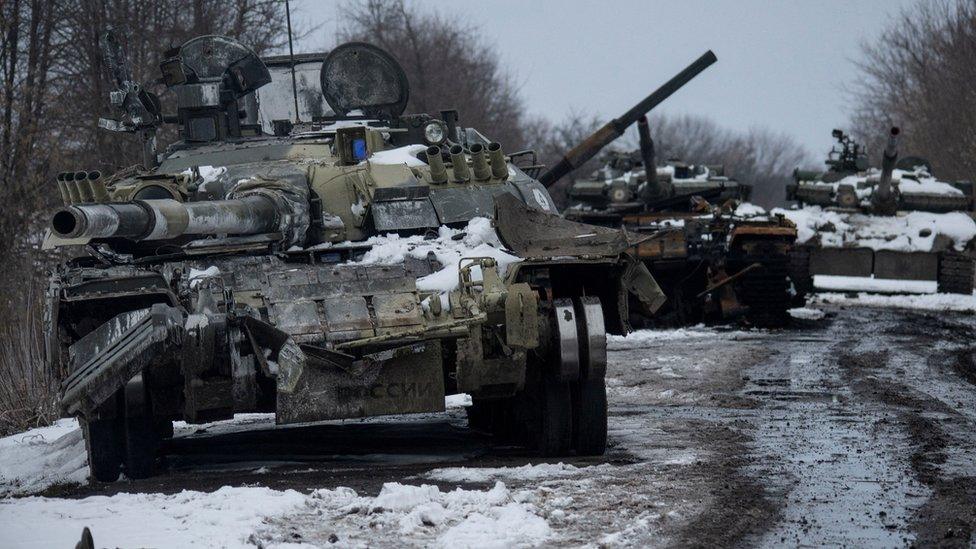
Russia has one of the largest and most powerful armed forces in the world, but that has not been apparent in its initial invasion of Ukraine. Many military analysts in the West have been surprised by its performance on the battlefield so far, with one describing it as "dismal".
Its military advances appear to have largely stalled and some now question whether it can recover from the losses it has suffered. This week, a senior Nato military official told the BBC, "the Russians clearly have not achieved their goals and probably will not at the end of the day". So what has gone wrong? I have spoken to senior Western military officers and intelligence officials, about the mistakes Russia has made.
Misguided assumptions
Russia's first mistake was to underestimate the strength of resistance and the capabilities of Ukraine's own smaller armed forces. Russia has an annual defence budget of more than $60bn, compared with Ukraine's spending of just over $4bn.
At the same time, Russia, and many others, appear to have overestimated its own military strengths. President Putin had embarked on an ambitious modernisation programme for his military and he too may have believed his own hype.
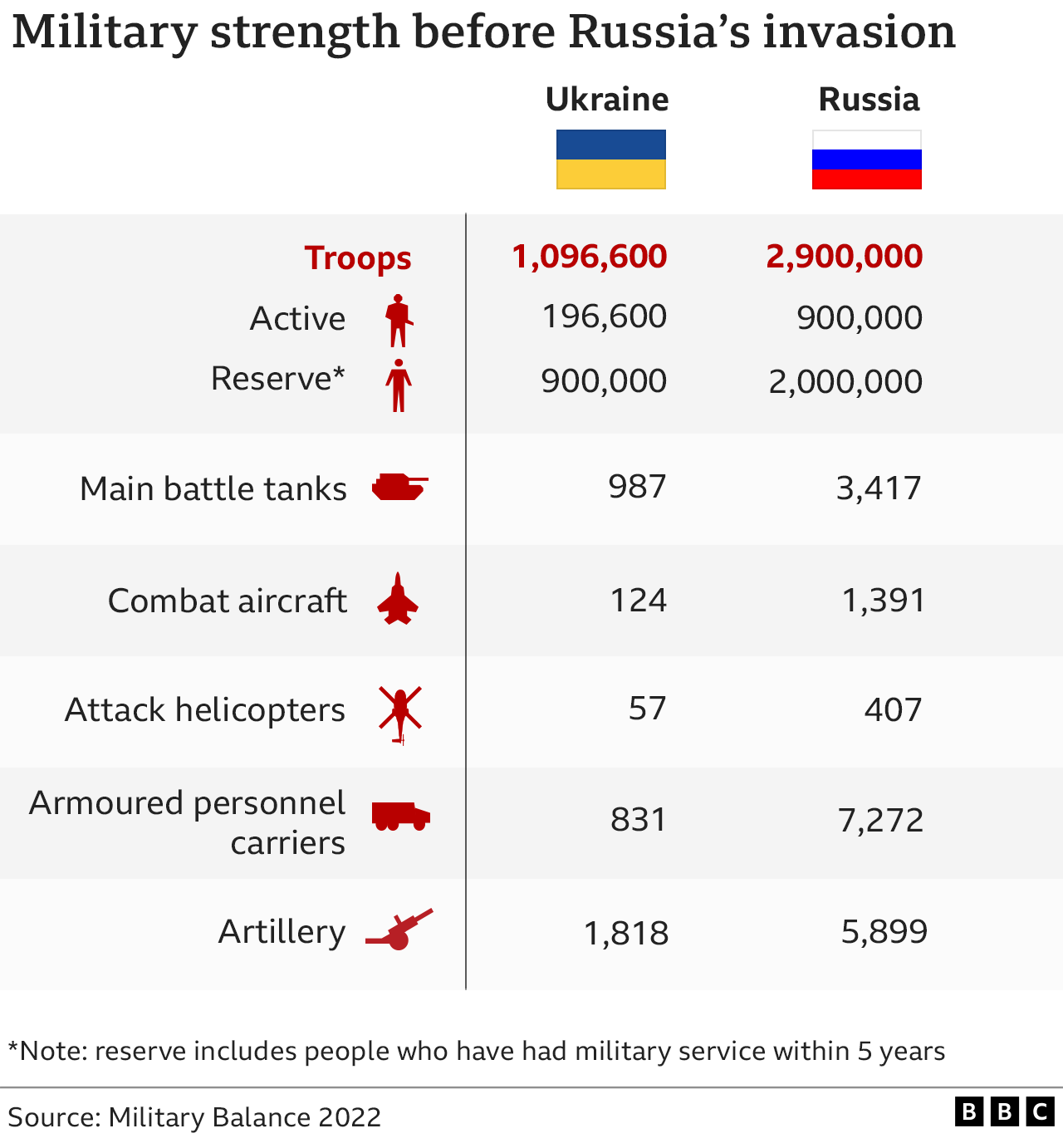

A senior British military official said much of Russia's investment had been spent on its vast nuclear arsenal and experimentation, that included developing new weapons such as hypersonic missiles. Russia is supposed to have built the world's most advanced tank - the T-14 Armata. But while it has been seen on Moscow's Victory Day Parade on Red Square, it has been missing in battle. Most of what Russia has fielded are older T-72 tanks, armoured personnel carriers, artillery and rocket launchers.
At the start of the invasion Russia had a clear advantage in the air, with the combat aircraft it had moved near the border outnumbering Ukraine's air force by more than three to one. Most military analysts assumed the invading force would quickly gain superiority in the air, but it has not. Ukraine's air defences are still proving effective, limiting Russia's ability to manoeuvre.
Moscow may have also assumed its special forces would play an important role, helping deliver a quick, decisive blow.
A senior Western intelligence official told the BBC that Russia thought it could deploy lighter, spearhead units like the Spetsnatz and VDV paratroopers, "to eliminate a small number of defenders and that would be it". But in the first few days their helicopter assault on Hostomel Airport, just outside Kyiv, was repelled, denying Russia an airbridge to bring in troops, equipment and supplies.
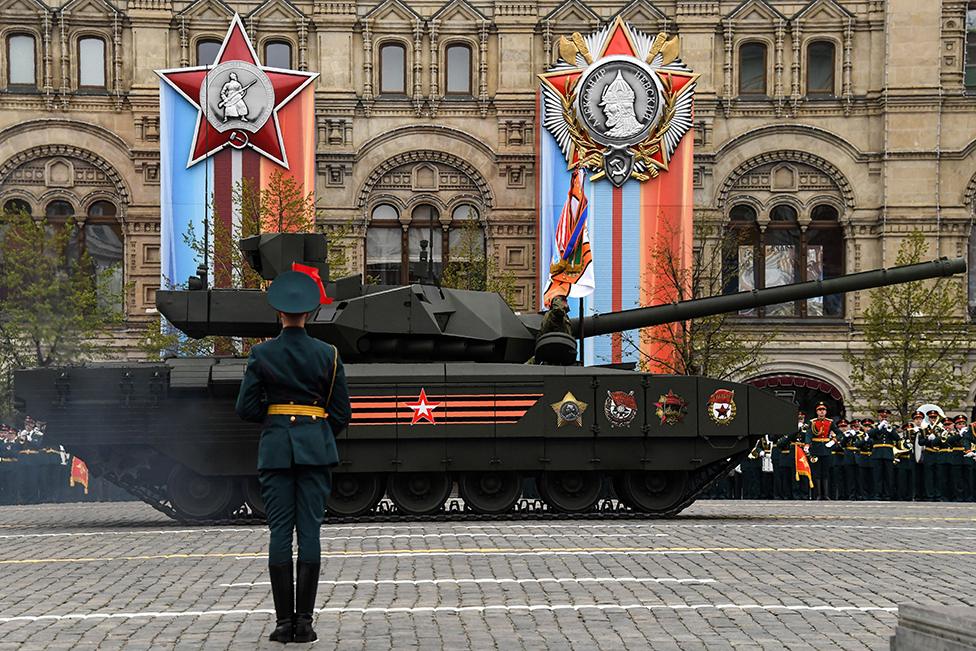
On the parade ground but not the battleground - Russia's T-14 Armata tank
Instead, Russia has had to transport its supplies mostly by road. This has created traffic jams and choke points which are easy targets for Ukrainian forces to ambush. Some heavy armour has gone off road, only to get stuck in mud, reinforcing an image of an army that has become "bogged down".
Meanwhile, Russia's long armoured column from the north that was captured by satellites has still failed to encircle Kyiv. The most significant advances have come from the south, where it has been able to use rail lines to resupply its forces. The UK Defence Secretary, Ben Wallace, told the BBC that President Putin's forces "have lost the momentum".
"They're stuck and they are slowly but surely taking significant casualties."
Losses and low morale
Russia had amassed a force of around 190,000 troops for this invasion and most of those have already been committed to the battle. But they have already lost about 10% of that force. There are no reliable figures for the scale of either Russian or Ukrainian losses. Ukraine claims to have killed 14,000 Russian troops, though the US estimates it is probably half that number.
Western officials say there is also evidence of dwindling morale among Russian fighters, with one saying it was "very, very, low". Another said the troops were "cold, tired and hungry" as they had already been waiting in the snow for weeks in Belarus and Russia before they were given the order to invade.
Russia has already been forced to look for more troops to make up for its losses, including moving in reserve units from as far afield as the east of the country and Armenia. Western officials believe it is also "highly likely" that foreign troops from Syria will soon join the fight, along with mercenaries from its secretive Wagner group. A senior Nato military official said this was a sign it was "scratching the bottom of the barrel".
Supplies and logistics
Russia has struggled with the basics. There is an old military saying that amateurs talk tactics while professionals study logistics. There is evidence that Russia has not given it enough consideration. Armoured columns have run out of fuel, food and ammunition. Vehicles have broken down and been left abandoned, then towed away by Ukrainian tractors.
Western officials also believe Russia may be running low on some munitions. It has already fired between 850 and 900 long-range precision munitions, including cruise missiles, which are harder to replace than unguided weapons. US officials have warned Russia has approached China to help address some of its shortages.

Defence support announced by the US is expected to include the Switchblade "kamikaze" drone
In contrast, there has been a steady flow of Western-supplied weapons going into Ukraine, which has been a boost for its morale. The US has just announced it will be providing an additional $800m in defence support. As well as more anti-tank and anti-aircraft missiles, it is expected to include Switchblade, which is a small, US-developed, "kamikaze" drone that can be carried in a backpack before being launched to deliver a small explosive at targets on the ground.
Western officials still warn that President Putin could "double down with greater brutality". They say he still has enough firepower to bombard Ukrainian cities for a "considerable period of time".
Despite the setbacks, one intelligence official said President Putin was, "unlikely to be deterred and may instead escalate. He likely remains confident that Russia can militarily defeat Ukraine". And while the Ukrainian forces have shown fierce resistance, that same official warned that without significant resupplies they too could "eventually be spent in terms of ammunition and numbers". The odds may be better than when the war first started, but they still seem stacked against Ukraine.

War in Ukraine: More coverage
Related topics
- Published21 April 2022
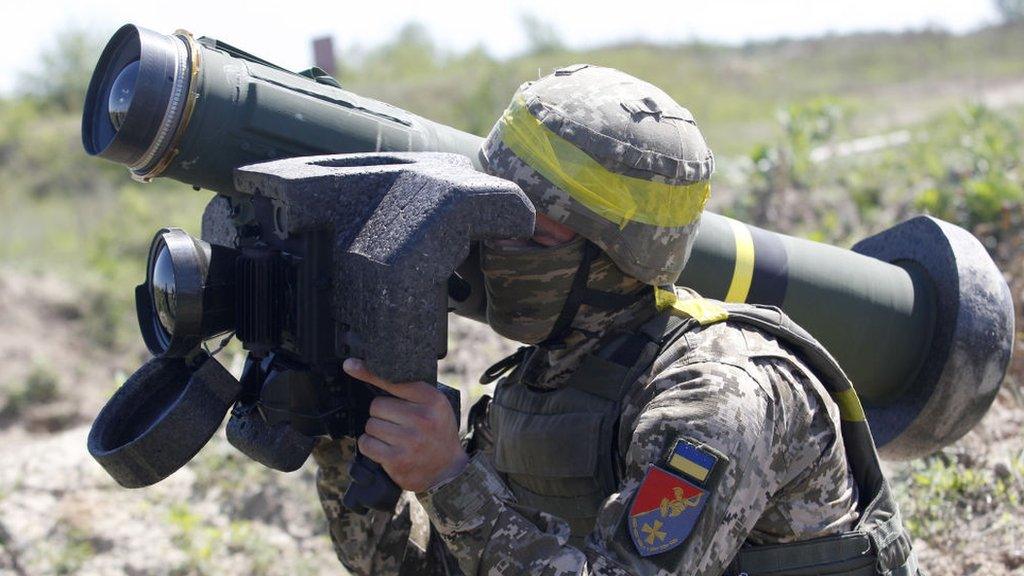
- Published17 March 2022
